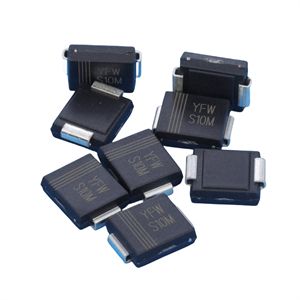Date:2024-11-27 Categories:Product knowledge Hits:329 From:Guangdong Youfeng Microelectronics Co., Ltd
Circuit protection is a very important part of electronic device design, aimed at protecting circuits from damage caused by factors such as overvoltage, overcurrent, and overheating. Traditional circuit protection schemes generally use TVS diodes and fuses to achieve protection, but these schemes have some drawbacks, such as slow response speed and limited protection range. Therefore, we need to find better active circuit protection solutions that can replace TVS diodes and fuses.
Active circuit protection scheme refers to a scheme that achieves circuit protection through the use of electronic components. Common active circuit protection schemes include overvoltage protection, overcurrent protection, and over temperature protection. Below, we will provide a detailed introduction to some active circuit protection schemes.
1. Overvoltage protection scheme:
Overvoltage protection refers to the use of electronic components to limit the rise of voltage in a circuit when the voltage exceeds the set value. The traditional overvoltage protection scheme uses TVS diodes to provide a low impedance path in the circuit to maintain the voltage within a safe range. However, TVS diodes need to be replaced after breakdown and have a slower response speed.
The alternative active circuit protection scheme is to use voltage limiters. Voltage limiter is a clamping device that automatically adjusts its output voltage when the voltage in the circuit exceeds the set value, thereby limiting the voltage rise in the circuit. Voltage limiters can have the advantages of fast response speed, high voltage suppression capability, and no need for replacement.
2. Overcurrent protection scheme:
Overcurrent protection refers to the use of electronic components to restrict the flow of current in a circuit when the current exceeds the set value. The traditional overcurrent protection scheme uses fuses. When the current exceeds the rated value of the fuse, the fuse will melt and cut off the circuit. However, the fuse needs to be replaced and the response speed is slow.
The alternative active circuit protection scheme is to use current sensors. Current sensors can monitor the current in the circuit in real time and trigger protection mechanisms when the current exceeds the set value. Common current sensors include resistive current sensors and Hall effect current sensors. These sensors have the advantages of fast response speed, high precision, and long lifespan.
3. Over temperature protection scheme:
Over temperature protection refers to the use of electronic components to reduce the temperature of a circuit when the temperature exceeds the set value. The traditional over temperature protection scheme uses a thermistor. When the circuit temperature exceeds the triggering temperature of the thermistor, the resistance will change, thereby reducing the circuit temperature. However, thermistors require cooling to return to normal and have a slower response speed.
The alternative active circuit protection scheme is to use temperature sensors and fans. The temperature sensor can monitor the circuit temperature in real time and trigger the fan to operate when the temperature exceeds the set value. The fan reduces the circuit temperature by exhausting air, thereby achieving over temperature protection. This scheme has fast response speed and effective cooling capability.

Previous: Classification, Structure, and Principle of MOSFET